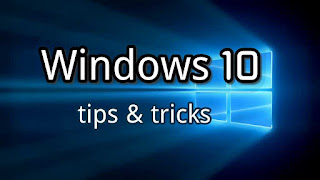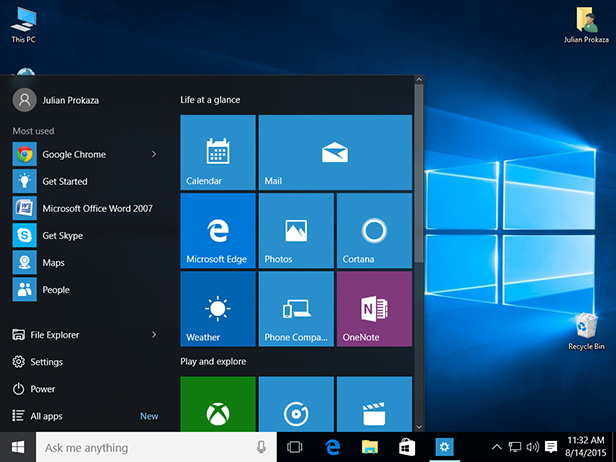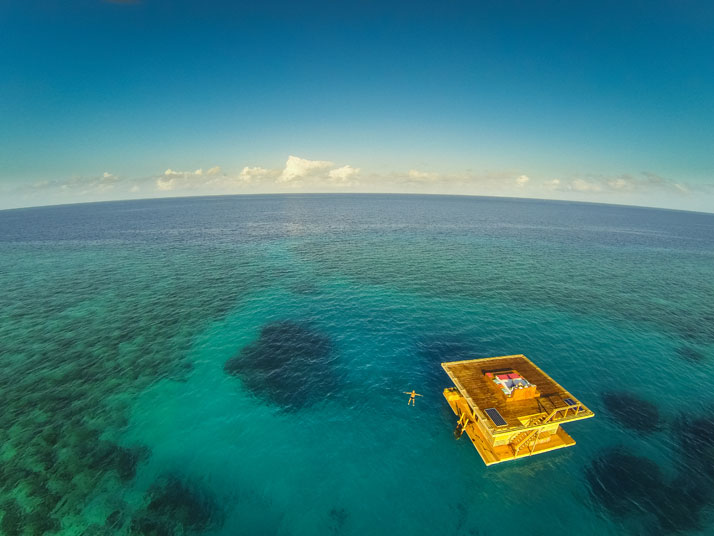Don't get locked into just left-clicking the button try right-clicking it, too. A different menu will open with shortcuts to various Windows 10 settings, shut-down options and a one-click way to show the Desktop.
The Windows 10 Start menu is bigger than previous ones because it packs in more features, but you can resize it if the default size doesn’t suit. Just open the Start menu and drag the top or right edge to make it taller, shorter, wider or narrower.

If you find the Start menu is too small for your monitor which can happen if you use a very high resolution you can make it bigger without affecting its overall proportions. Go to Start > Settings > System > Display and use the slider on the right to increase the size of the Start menu (and most other parts of Windows 10) in 25% steps. Click the Apply button, then log out of and back into Windows to see the effect.
If you still struggle to see the Start menu clearly, try changing its colour via Start > Settings > Personalisation > Colours. Switching off Transparency effects can help.
You can also choose a colour you like from the section that appears, or opt to pick one automatically from your desktop background.

- Make the Start menu full-screen but keep the Taskbar
If you love the Start menu's Live Tiles so much you wished they were full-screen, then fret not. Go to Start > Settings > Personalisation > Start and turn on the Use Start full screen option.

This is similar to activating Tablet mode from the Action Centre, but it keeps the Taskbar and Search box visible (and you can use both modes at once). With full-screen Start active, you’ll find the shut down options and your other applications on the buttons just above the Start button.
- Add more shortcuts to Windows folders
Believe it or not, the default Start menu is just a slimmed down version of what Windows 10 can show. In Start > Settings > Personalisation > Start, click Choose which folders appear on Start and you can opt to show many more Windows folder shortcuts on the Start menu.

- Add shortcuts and folders
If you want to add a shortcut to one of your own folders to the Start menu, find it in an Explorer window, right-click it and select Pin to Start. You’ll then find the folder in Start > File Explorer — click the > jump list button at the right to see the pinned folders within (clicking File Explorer itself opens an Explorer window). You can unpin folders from this list by clicking the pin icon to the right of each.
You can also organise tiles into folders. Simply click, hold and drag a tile from the Start Menu onto another and they'll be put into a folder together.

- Add apps to the Live Tiles list
You can pin app shortcuts to the Start menu in a similar way. Find an app from the list in the Start Menu, then rght-click it and choose Pin to Start.

You can uninstall an app directly from the Start menu by right-clicking its icon anywhere you see it and selecting Uninstall. This only works for the apps you’ve installed yourself and not those built into Windows 10.
Windows 10’s Live Tiles aren’t for everyone, but you can make the best of them by dragging them around the right side of the Start menu to put the most useful ones at the top. You can also change the size by right clicking and selecting Resize, or turn off any distracting ‘live’ features by right-clicking and selecting More >Turn live tile off.

- Recreate the classic Start menu
If you yearn for the simple Start menu of old, you can recreate it — sort of. Just remove every Live Tile from the right side by right clicking each one and selecting Unpin from Start. Once you remove the last one, you can drag the right edge of the Start menu to reduce its width still further for a more streamlined look.






 This is similar to activating Tablet mode from the Action Centre, but it keeps the Taskbar and Search box visible (and you can use both modes at once). With full-screen Start active, you’ll find the shut down options and your other applications on the buttons just above the Start button.
This is similar to activating Tablet mode from the Action Centre, but it keeps the Taskbar and Search box visible (and you can use both modes at once). With full-screen Start active, you’ll find the shut down options and your other applications on the buttons just above the Start button.











Post a Comment
EmoticonClick to see the code!
To insert emoticon you must added at least one space before the code.